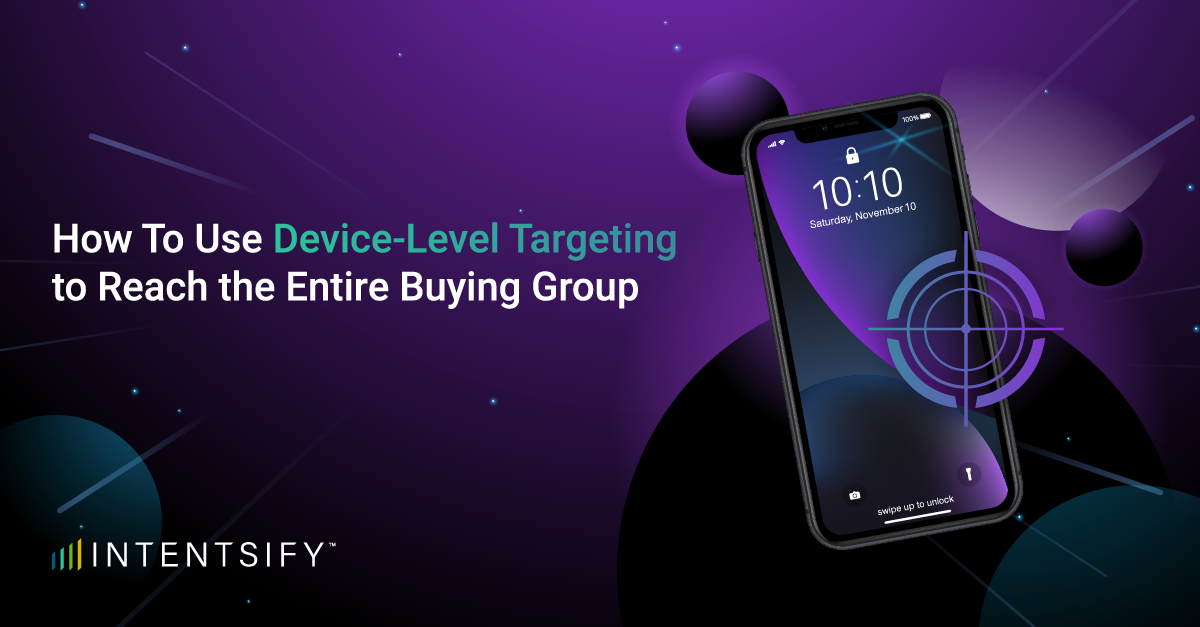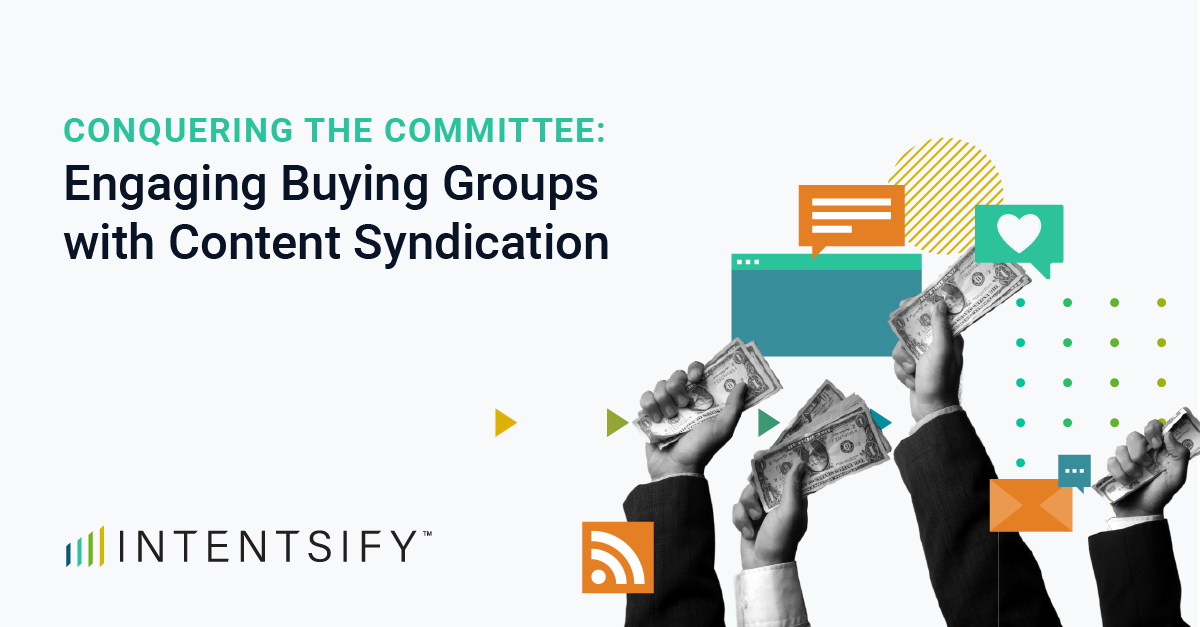Clicks and downloads only tell part of the story. To really understand what’s driving revenue, you need to focus on quality lead generation KPIs that show how buyers are progressing towards a purchase.
In this blog, we’ll break down the metrics that actually matter and explore how Intentsify makes it easier to track attribution and prove the real impact of your content syndication efforts.
Why traditional metrics don’t tell the full story
Too often, teams track what’s easy to measure: impression, clicks, and download counts. While it can be tempting to rely on these metrics, they aren’t reliable when used alone. They focus on quantity over quality by measuring surface-level activity, and they reward low-value targets instead of long-term relationship building and trust. We call this the “MQL trap.”
After all, just because someone downloads an eBook, it doesn’t mean they’re ready to talk to your sales team, especially in a B2B environment where buying decisions involve multiple stakeholders over long cycles. Without deeper engagement or clear intent signals, that download may just be a casual content interaction as opposed to a true sales opportunity.
Prioritizing Quality-focused KPIs that get results
Shifting from vanity metrics to quality-focused lead generation KPIs gives a clearer view of what’s truly driving pipeline. Using the right KPIs help you understand how well you’re attracting high-intent buyers, how leads are progressing through the funnel, and whether your efforts are leading to real sales opportunities.
The Metrics that Matter
1. Percentage of buying group members engaged
B2B buying decisions typically involve multiple stakeholders. Tracking the percentage of engaged roles within a target account helps you measure how broadly your brand is resonating across the buying committee. When multiple contacts from the same company interact with your content or campaigns, it’s a strong signal of genuine interest and purchase intent.
2. Lead-to-opportunity conversion rate
Your lead-to-opportunity conversion rate is the percentage of leads that convert into qualified sales opportunities. A high conversion rate means your targeting, messaging, and nurture efforts are reaching the right audience and driving meaningful engagement. Note: This does not mean falling back into the MQL-to-SQL conversion rate trap. Lead-to-opportunity is a different metric.
3. Average time to opportunity
Average time to opportunity is a measure of how long it takes for a lead to move from initial capture to a qualified sales opportunity. A shorter time often signals high buyer intent. Tracking this KPI helps uncover delays in your nurture or lead handoff process.
Buying group engagement vs. individual lead metrics
The traditional approach to measuring engagement focuses on actions from single contacts, such as email opens or form fills. However, this optimizes for lead volume instead of deal readiness, and ignores the reality that most modern B2B purchases involve multiple stakeholders.
Buying group engagement is a newer approach that tracks activity across the entire buying committee instead of measuring individuals. It looks at whether multiple people from the same account are engaging with your content, and focuses on whether key decision-makers are showing interest. This means your sales teams can focus their efforts on high-intent accounts.
Attribution challenges for multi-channel campaigns
Buyers engage with multiple channels over a long period, making it hard for marketers to pinpoint the touchpoint that truly influenced the opportunity. Additionally, referrals from podcasts, internal messaging, and incomplete social media data create a fragmented view of engagement.
Too often, credit is given to the final interaction, while the earlier touchpoints that sparked interest are ignored. This leads to misaligned insights and budget decisions that don’t reflect what’s actually converting. Teams must look at B2B marketing strategies as a puzzle. Every piece is a channel, and if one piece gets removed, the puzzle is incomplete. Cherry picking what channels to invest in risks missing out on critical buyer engagement opportunities and leads to teams often over-investing in one area and completely neglecting another.
For example, at Intentsify, we’ve had customers that only invest in intent-activated lead generation instead of taking an integrated approach. They made this choice because they didn’t see the same amount of conversions coming from their digital display campaigns as they did for the content syndication program. By nature, display campaigns are constructed to be always on and remind buyers of the brand and the key value proposition. That way, when the lead generation programs are served, the buyer is already familiar with the brand. Take away the display programs because it was rarely the last touch, and you have a lead generation program that requires a lot of extra nurturing before leads are passed to sales.
Instead of looking for last-touch attribution, we look at coverage and influence. Did the buying group personas at our target accounts get served these ads before the lead conversion event? If so, was the time to opportunity faster than those that did not have coverage?
Turning syndication data into executive-level insights
To effectively prove the value of content syndication, executive dashboards must focus on lead generation KPIs that drive revenue, not just clicks.
Intentsify supports this process by allowing you to create dashboards that spotlight critical metrics like your pipeline, lead-to-opportunity conversion rates, and sales acceptance rates. This directly ties your syndication efforts to business results. It also delivers account-level engagement and multi-channel attribution insights, giving executives a clear view of how syndication impacts the entire buying group.
By visualizing these key lead generation KPIs in an accessible format, Intentsify helps leadership make informed budget decisions, align marketing and sales teams, and focus on high-impact growth initiatives.
Focus on lead generation KPIs that prove real impact
By focusing on key lead generation KPIs like buying group engagement, lead-to-opportunity conversion, and sales acceptance rates, you’ll gain clearer insights into how your actions are influencing your pipeline.
For more information on creating lead generation programs that your CMO can be proud of, access Intentsify’s full eBook: How to Run Content Syndication Programs Worth Your Budget.






